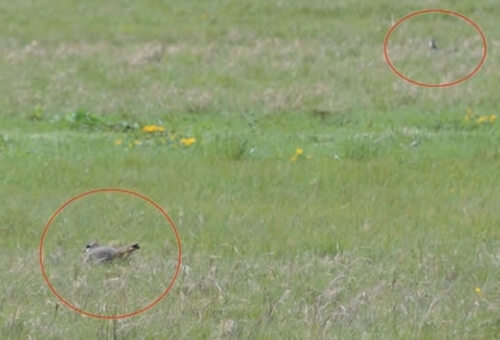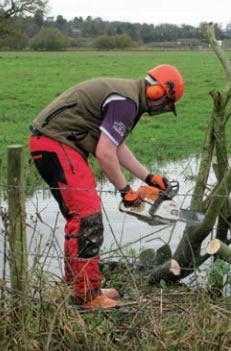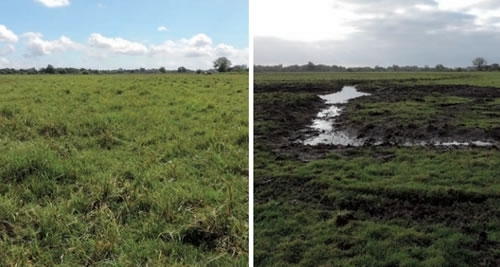'Waders For Real' Project Ecologist Lizzie Grayshon outlines an exciting project that aims to reverse the decline of breeding waders in the Avon Valley
The ‘Waders for Real’ Life+ project was launched in 2014 with the aim of reversing the decline of breeding waders in the Avon Valley. This project combines a local farmer-led initiative within the private sector (farmers and landowners), conservation charities (GWCT, Hampshire & IOW Wildlife Trust), and the public sector (Natural England, Environment Agency).
 Two female lapwing nesting within 20 metres of each other
Two female lapwing nesting within 20 metres of each other
Our monitoring of lapwing clearly shows that poor breeding success is driving the decline and that low nest and chick survival is the result of high levels of predation. The Avon Valley is typical of river valley
situations where other biodiversity considerations are also important and the feasibility of effectively reducing predator impacts is constrained by the landscape and multiple land ownership.
Our approach is to put into practice the three principles applied in wild game management:
1. Creating appropriate nesting habitat.
2. Creating brood-rearing habitat.
3. Reducing predation pressure.
Habitat assessments and monitoring and tracking data from radio-tagged lapwing chicks have allowed us to effectively plan habitat improvement. EU Life+ funding is being targeted at restoring four ‘hotspots’ to optimal wader breeding habitat. We hope that with improved habitat and lower predation levels, nest and chick survival will be noticeably higher over the course of the four-year project.
 Improving nesting habitat
Improving nesting habitat
We have been working with Sparsholt College to remove old fence lines and scrub to open up some of the smaller fields and reduce the number of perching posts for corvids. Creating open areas with appropriate swards should provide and encourage the lapwing to nest in loose colonies.
Through this work we are able to provide hands-on work experience for the game and wildlife management students on a practical conservation project. In return they provide us with valuable labour for addressing some
of the fundamental habitat work. For example, last winter students training for their chainsaw licence were able to get good practice taking out small alders and willows along some of the old ditches.
Creating in-field wet features
Wet features, mainly ditches and scrapes, are extremely important for lapwing and redshank to raise chicks.
These habitats are rich in invertebrates which the chicks feed on and the soft ground facilitates feeding. In many areas we have been removing vegetation that is blocking ditches and re-digging ditches that have dried out.
 Before (left) and after (right) a new ditch and scrape have been added to a field to create a more complex structure and chick-foraging habitat
Before (left) and after (right) a new ditch and scrape have been added to a field to create a more complex structure and chick-foraging habitat
By creating more in-field wet features we are providing increased chick-foraging habitat within the fields away from the edges, which are often used by many mammal predators when hunting. This creates a more complex habitat, in turn creating cover from avian predators and open areas alongside foraging habitat.
The benefit of creating these wet features will also be seen during the winter months for wintering waders and waterfowl, including black-tailed godwit, snipe, wigeon, teal and pintail.
Reducing predation pressure
The use of predator exclusion fences and nest cages has been successful in restoring breeding wader population on some reserves, however, our system is a little different and initial problems have been found with both methods. We have found that the lapwings have not accepted the nest cages on many attempts, although hatching rate has been high when they have been used. Electric fences have proved difficult on grazed areas, and owing to rapid grass growth from mid-May.
Further work will enable us to try to improve designs and assess the extent of benefits from deploying
these measures.
Please support our vital wader work in the Avon Valley